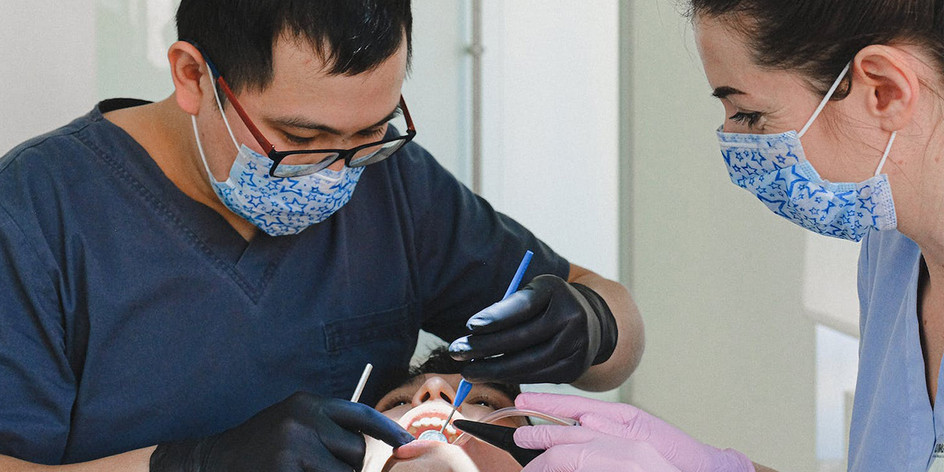The Transforming Landscape of Dental Practice: A Glimpse into 2024
The dental industry has been experiencing a remarkable transformation, and as we approach 2024, it's essential to reflect on the trends and changes that have been shaping the field. To provide a comprehensive overview, we will explore the insights from "The Evolving Dental Practice Model" by the American Dental Association (ADA) Health Policy Institute (HPI), plus try some predictions for the year ahead.
Evolution of Dental Practices
The ADA HPI report offers valuable insights into the changing dynamics of dental practices. It examines factors such as the number and size of practices, regional and state variations, and the shifting landscape of the dental workforce. Let's take a closer look at how these trends are shaping the future.
Diverse and Competitive Practices
The dental practice market is becoming increasingly diverse and competitive. Patients now have more choices than ever when it comes to their dental care. This shift has been driven by various factors, including the rise of Dental Service Organizations (DSOs), group practices, and the expansion of services offered by dental practices.
In 2024, we can expect this trend to continue. Dental practices will likely focus on differentiating themselves through specialized services, enhanced patient experiences, and improved technology integration. To thrive in this competitive landscape, dentists will need to innovate and adapt to changing patient expectations.
A Changing Dental Workforce
The demographics of the dental workforce are evolving rapidly. Based on the ADA HPI report, we've seen an influx of younger dentists, increased diversity in terms of gender and ethnicity, and a growing number of specialists entering the field. This shift reflects a broader trend towards a more inclusive and representative dental profession.
In 2024, we can anticipate that these changes will continue to shape the dental workforce. More women and minorities will contribute to the profession, bringing unique perspectives and skills. As the profession diversifies, dental practices may benefit from a broader range of expertise, potentially offering more specialized services to meet the evolving needs of patients.
The Changing Dental Practice Model
The ADA HPI report also highlights shifts in the dental practice model. These changes are instrumental in redefining the way dental care is delivered and accessed.
From Solo to Group Practices
Traditionally, many dentists operated as solo practitioners. However, the report reveals a growing trend toward dentists working as employees, associates, or partners in group practices. This shift allows for greater collaboration, shared resources, and expanded service offerings within dental practices.
In 2024, we can expect this trend to continue, with more dentists opting for group practice models. Collaboration among dental professionals can lead to improved patient care, as specialists work together to address complex cases. Additionally, group practices may be better equipped to invest in advanced technology and offer a wider range of services, enhancing the overall patient experience.
Accelerated Digitalization
The COVID-19 pandemic has accelerated several existing trends within the dental industry, and digitalization is no exception. The report indicates that the adoption of digital technologies, such as telehealth consultations and electronic record-keeping, has increased significantly.
In 2024, we can anticipate further advancements in digital dentistry. From virtual consultations to 3D printing of dental prosthetics, technology will continue to play a crucial role in improving patient care and practice efficiency. Dentists who embrace these digital tools will likely gain a competitive edge in delivering high-quality care.
Access to Care Challenges
The pandemic has also highlighted challenges related to access to dental care. Temporary closures, concerns about infection control, and shifting patient volumes have affected dental practices across the country.
In the coming year, the dental industry will continue to address these challenges. Stakeholders, including the ADA and other organizations, will need to advocate for policies that promote access to care, especially in underserved communities. Innovative solutions, such as teledentistry and mobile dental clinics, may become more prevalent to bridge gaps in care.
The Path Forward
In conclusion, the dental industry is undergoing a significant transformation, with far-reaching implications for both practitioners and patients. To succeed in this evolving landscape, dentists must adapt, innovate, and embrace new technologies and practice models. Additionally, ongoing support and advocacy from organizations like the ADA will be crucial in ensuring the continued advancement of the dental profession and the oral health of the public.
As we look ahead to 2024, the dental field holds promise for those who are willing to embrace change, collaborate, and prioritize the evolving needs of patients. By doing so, we can build a brighter future for the dental profession and ensure that access to high-quality dental care remains accessible to all.

